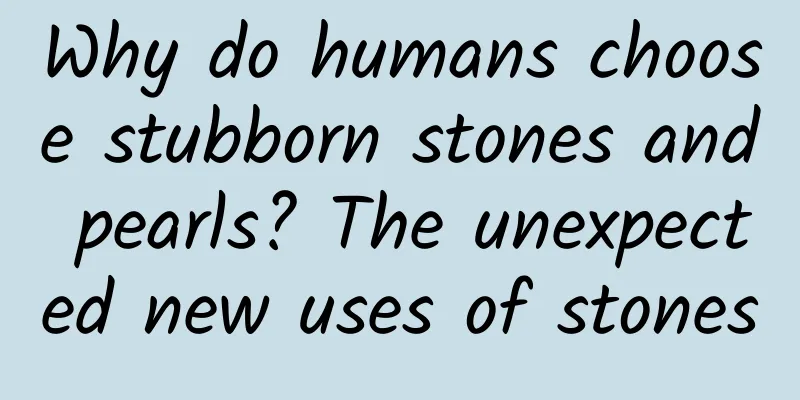There are so many pots, how do you choose a good and suitable one?

|
For gourmets who believe in "do it yourself, have enough food and clothing", a good and easy-to-use pot is like a "stabilizing force" in the kitchen, which can directly make us get twice the result with half the effort when cooking all kinds of delicacies. But nowadays, there are many kinds of pots on the market, with different materials, craftsmanship, shapes and functions. How can we choose a good pot that meets our needs? Image source: soogif 01 Criteria for choosing a pot To choose the right cookware, you must first understand the performance standards of different cookware. The essence of a cookware is actually a container for heating food. Therefore, several of its important performance standards are related to temperature, and these standards also determine the different usage scenarios of different cookware. Image source: soogif Thermal sensitivity Thermal sensitivity is the reaction rate of the pot's own temperature change after the external temperature environment changes. When we heat the pot, the higher the thermal sensitivity of the pot, the faster the temperature rises. Conversely, when the pot with high thermal sensitivity is away from the heat source, the temperature of the pot drops more slowly. Thermal stability Thermal stability refers to the ability of a cookware to maintain a stable temperature. Generally speaking, the thermal stability and thermal sensitivity of a cookware are two contradictory characteristics. A cookware with better thermal stability tends to have poorer thermal sensitivity. When such a cookware is heated, its own temperature rises slowly, but when it leaves the heat source, its temperature drops slowly, and it can maintain heat for a longer time. Thermal efficiency From the literal meaning, thermal conductivity seems to be the same as thermal sensitivity. But in fact, thermal conductivity refers to the uniformity of heat conduction after the pot is heated. For example, when the pot is placed on the heat source to heat, the temperature of the bottom of the pot that is directly in contact with the heat source will rise first for the pot with low thermal conductivity, and then the heat will gradually spread to the surrounding parts; while the pot with high thermal conductivity will heat up the entire bottom of the pot more evenly at the same time. In addition to the three temperature-related characteristics mentioned above, different cookware also has other auxiliary performance standards such as weight, food capacity, corrosion resistance, wear resistance, and sticking, as well as the very important price of the cookware. These are also important performance references when we choose cookware. 02 Different applications, different cookware After understanding the main performance standards of pots, we can select pots in a targeted manner according to specific cooking needs and scenarios. For an average family kitchen, there are probably the following cooking scene requirements. Image source: Pixabay Stir-fry When cooking, you often need to "fry quickly", which actually requires that the grease in the pot, which acts as a heat-conducting medium, be heated to a very high temperature in a very short time, so you need a pot with high thermal sensitivity. At the same time, you often need to flip the wok when cooking, which requires the pot to be relatively light. Considering these conditions, a wrought iron pot is more suitable for cooking. Wrought iron pots are made by forging or pressing wrought iron sheets. The carbon content in the material is very low, generally less than 0.1%. Because of the low carbon content, wrought iron pots are not only light in weight, but also highly thermally sensitive. However, due to the metallic properties of wrought iron pots, they are easily oxidized and corroded when exposed to the air for a long time, which is what we often call rust. We can solve this problem by daily "pot maintenance": after each use, ensure that the surface of the wrought iron pan is dry and wipe the surface with cooking oil. With proper maintenance, a layer of oil film can adhere to the surface of the wrought iron pan, which can not only prevent oxidation and corrosion, but also make it non-stick. Stew Stewing and cooking often require adding water after frying, so pots suitable for stewing and cooking are often less thermally sensitive and more thermally stable. Cast iron pots and enamel pots are both suitable for stewing and cooking. Compared with wrought iron pots, cast iron pots contain much more carbon, generally more than 2%, which makes cast iron pots heavier and less sensitive to heat than wrought iron pots. And because cast iron has a high carbon content, it is brittle and fragile, so cast iron pots cannot be made by hammering or pressing. They can only be made by melting the cast iron into liquid and pouring it into a mold for casting. The cast iron pot we often mention is actually a cast iron pot. In some specific occasions, cast iron pans can barely be used as cooking pots, but because of its good thermal stability, they are more often used for stewing and cooking. For example, the famous Northeastern iron pot stewed goose, the pot used is generally a cast iron pot. The daily maintenance of cast iron pots is similar to that of wrought iron pots. An enamel pot is actually a kind of cast iron pot. The difference between it and an ordinary cast iron pot is that the surface of the cast iron pot is covered with a layer of enamel (actually enamel). This layer of enamel not only makes the enamel pot look several levels higher, but also improves the thermal stability and thermal conductivity of the cast iron pot, making it heat more evenly and not corroded by oxidation. It is equivalent to an upgraded version of an ordinary cast iron pot. However, enamel pots are often more expensive and more "delicate". If they are used roughly, the enamel layer will fall off due to bumps. Stew/pot (soup) Stewing or boiling soup requires long-term low-temperature heating to achieve the effect of blending the flavor and nutrients in the ingredients with the soup. Therefore, pots suitable for boiling soup do not need to pursue thermal sensitivity at all, but require extreme thermal stability. In this scenario, ceramic pots and casseroles are the best choices. Whether it is a ceramic pot (such as a clay pot and a clay pot) or a casserole, because it is made of non-metallic material, it has a lower thermal sensitivity and often takes a long time to heat up slowly. This characteristic is just right for slow cooking over low heat for several hours. Using ceramic pots or casseroles will not cause the rust problem of iron pots, but you still need to be careful when using these pots. In addition to preventing bumps, you must also avoid sudden temperature changes between hot and cold, and prevent dry burning. Otherwise, these pots may crack due to extreme temperature changes. Frying The difference between frying and stir-frying is that frying uses less fat, which often only serves to lubricate the bottom of the pan. Therefore, for frying, the heat-conducting medium that heats the ingredients is the bottom of the pan itself. That is why we find that the pans used for frying are often frying pans. As for the material selection of frying pans, stainless steel with an aluminum core or copper core heat-conducting interlayer is more recommended. The reason why aluminum or copper is needed in the material is mainly because aluminum and copper have good thermal conductivity. Using them as the thermal conductive interlayer of the pan can improve the thermal conductivity of the pan. Even if the heating power is concentrated on a certain area of the bottom of the pan, the thermal conductive interlayer can make the entire pan surface heat up more evenly and quickly. However, since copper and aluminum may cause the corresponding metal elements to precipitate during the cooking process, causing damage to human health over the years, these two metals are not suitable for direct contact with food. They must be wrapped in corrosion-resistant and wear-resistant stainless steel to ensure our health and safety to the greatest extent. However, when choosing a stainless steel pot, you should also pay attention to the type of stainless steel. In my country's food safety certification for tableware, only 304 and 316 stainless steel can reach food grade, of which 316 has a higher standard and can reach medical standards. Other types of stainless steel may also release heavy metals that are harmful to human health during long-term heating and cooking, so we need to be careful when choosing pots. Image source: Pixabay 03 Can a non-stick pan be used? Finally, let's talk about non-stick pans. Most non-stick pans on the market, no matter how they are marketed, are mainly non-stick because they are coated with polytetrafluoroethylene, which is what we often call Teflon. In fact, Teflon itself is almost not absorbed by the human body, so in theory it is safe for the human body. But the problem is that in the process of manufacturing Teflon, a chemical called perfluorooctanoic acid may be used. This substance is a dispersant for polymers such as polytetrafluoroethylene and is physiologically toxic. In order to reduce costs, some manufacturers may use perfluorooctanoic acid as a raw material to synthesize Teflon coatings, which may pose a health hazard to some non-stick pans. In summary, non-stick pans containing Teflon can be used in theory, after all, this type of pan is light and easy to clean. However, when the Teflon coating falls off after long-term use, not only will its non-stick properties be greatly reduced, but it may also pose a health risk. Therefore, for families who have less cooking needs and pursue quick and easy dishes, non-stick pans can be used as alternative pans, and attention should be paid to maintenance during daily use. Do not use iron spatulas for cooking, and do not use wire brushes for cleaning to extend the life of the coating. If the coating is found to be falling off, remember to replace it as soon as possible. Source: Chongqing Science and Technology Museum Author: CPU, science writer Review experts: Huang He, Li Chunli, Xu Xiaoping Statement: Except for original content and special notes, some pictures are from the Internet. They are not for commercial purposes and are only used as popular science materials. The copyright belongs to the original authors. If there is any infringement, please contact us to delete them. |
<<: The smallest quantum light detector can be integrated on a silicon chip!
>>: Self-taught! How sophisticated are today’s AI deception methods?
Recommend
Why are some people not nearsighted even though they are playing with their phones? !
appendix: 1. Myopia may affect some career choice...
Former Meituan COO Gan Jiawei: Operations are Meituan’s core competitiveness | An article that explains the essence of operations (a must-read for operators)
Many times when we meet with colleagues, we will ...
New broadband players may disrupt the pricing structure
The broadband market has become less peaceful sin...
What’s the matter with Air China suspending meals on some flights? Why did Air China suspend meals on some flights?
China Southern Airlines has introduced regulation...
Kidney and leek can nourish the kidney? It's not that easy...
If you were to rank the model workers among your ...
In 5 days, WeChat will ban this behavior
As a "cosmic center", WeChat has always...
The latest news on Dalian’s lifting of lockdown in 2022: When will it be lifted? Is it unblocked now?
Recently, in this round of local epidemic in Liaon...
To what extent will animals sacrifice for their fellows?
Edward Wilson, an American biologist and naturali...
New iPod touch performance test: Gaming performance increased dramatically
Last Wednesday, Apple quietly released a new iPod...
How to start private domain marketing? (Case included)
Looking at the development history of the daily c...
Congratulations! The “divine arrow” carries the “Shenzhou 16” to the Tiangong!
May 30 Application and development stages of Chin...
Price inquiry for the development of Tongren men's clothing mini program. How much does it cost to develop Tongren men's clothing mini program?
Tongren men's clothing applet development pri...
Windows 11 now supports Android. Can the Surface tablet change the iPad's monopoly?
Last week, a big event happened in the technology...
Share 6 tips and some experiences in community operation based on my 10 years of operation experience!
My understanding of community refers to various g...
Android 11 DP3 new features summary: Independently set the left and right gesture sensitivity of the curved screen
Android 11 Developer Preview 3 was officially rel...









